Platform
- Home
- Platform

DataForce
As a core aPaaS platform in the digital retail sector, DataForce is pivotal in connecting and integrating business systems and data. It also enables businesses to unify brand management, resulting in a seamless and personalized omnichannel shopping experience for consumers.

DataForce
DataForce, as the aPaaS foundation for digital retail business, connects traditional business systems and integrates fragmented business data, which enhances a consumer shopping experience from omnichannel.
Unified Backstage Management
Provides several powerful management functions like management for store, online channels, promotions, unified commodity, inventory, order, member, and content material.

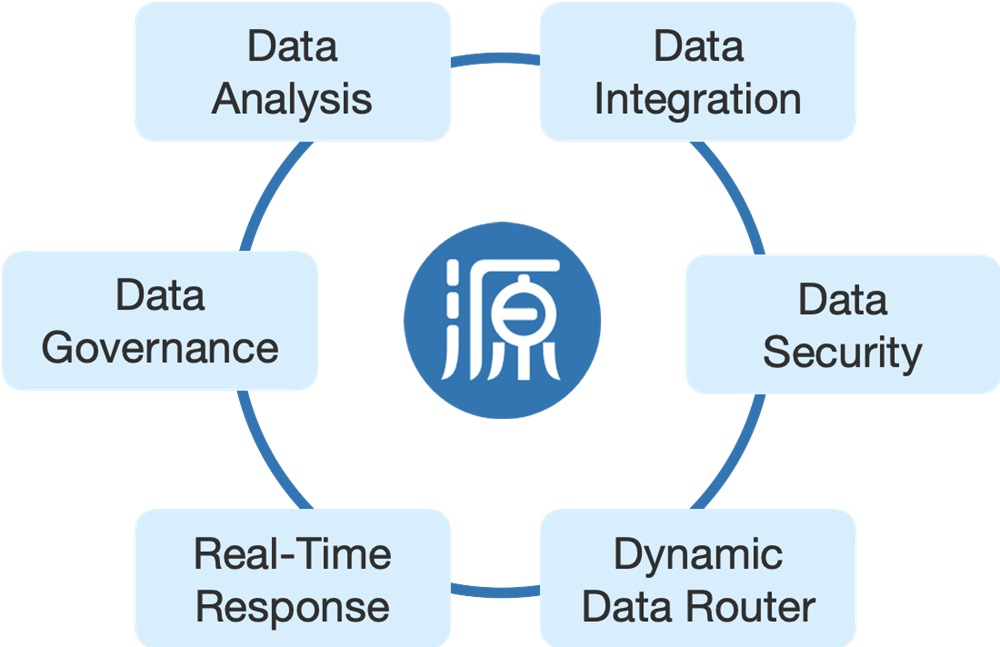
High Performance Data Engine
Integrates “People, Goods, Place” data comprehensively from omnichannel sources, which supports the further connections with consumers.
Integration Of Data
Omnichannel Integration
Rapid Iteration
Integration of data
Creates a unified data bank that provides standardized data services and flexibly supports all businesses
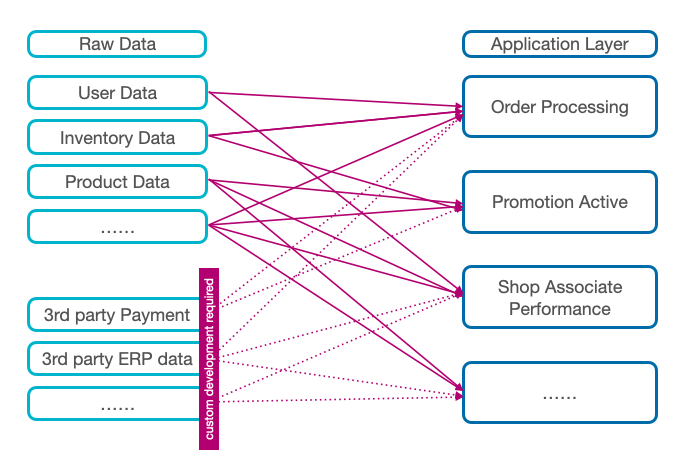
- IT Resource Wasting
- The code requires more non-reusable methods, which leads more storage space consuming, and more hardware and bandwidth resources using.
- Low Data Quality
- Each application needs to call and manipulate data from scattered data sources, which can easily affect data consistency and accuracy
- Inflexible 3rd-party systems
- 3rd party system may not receive or manipulate the data directly or easily. Poor support for third-party systems often requires extensive custom development for integration
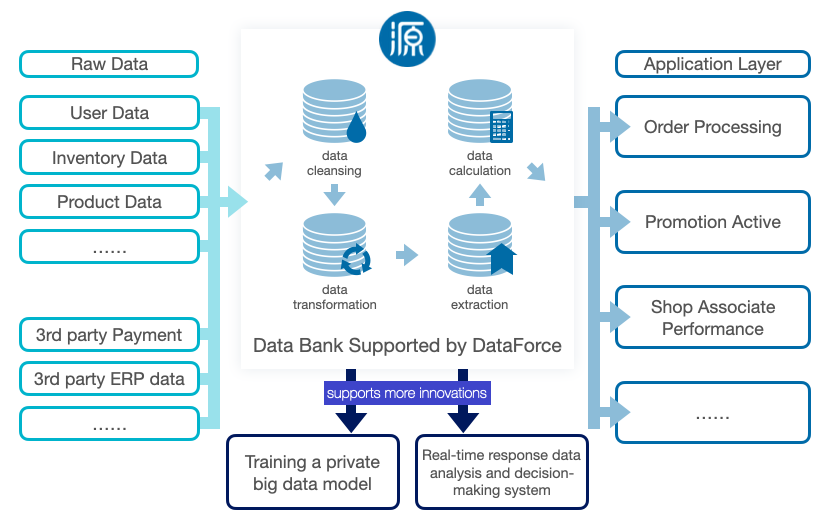
-
12-15%
cloud service cost reduced
- A unified data bank reduces data duplication and unnecessary data transfers, improving data processing efficiency and reducing resource waste
-
55-70%
data relevant dev cost reduced
- Data cleaning, validation, and normalization can enhance data quality and reduce errors and inaccuracies
- Streaming data through a unified data interface facilitates integration with third-party systems
-
infrastructure
for further innovation
- A unified data bank provides the standard format of data and API which is the infrastructure to support innovative extensions such as private big data model training.
Advance Omnichannel integration
Omnichannel integration across different business formats and operational models
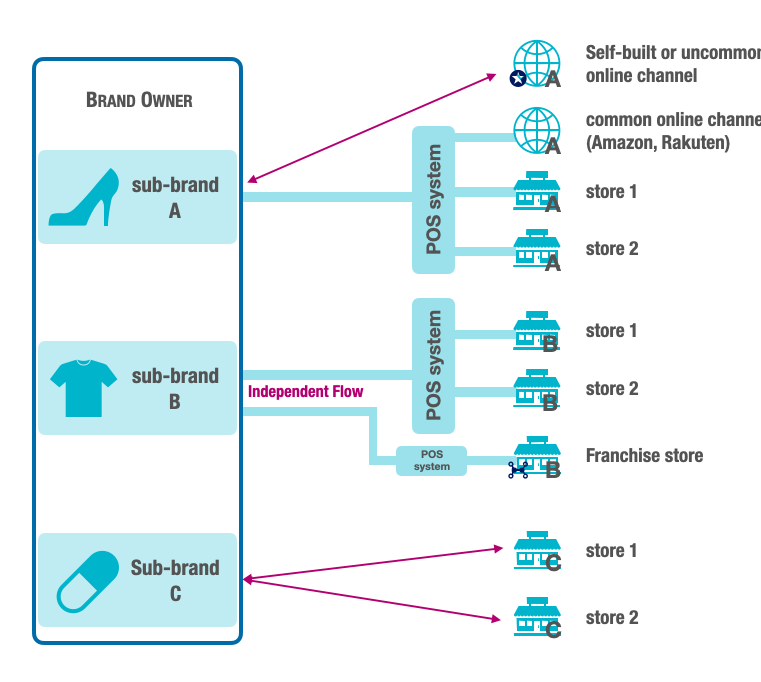
- Only standard e-com interfaces
- A usual POS system that typically integrate with online channels usually only provide standard interfaces for common e-commerce platforms like Amazon and Rakuten, and do not support self-built e-commerce platforms or other platforms like TikTok e-commerce
- Cross Operation Models Limited
- A brand with different types of stores, such as franchise and directly-operated stores, may find that a usual POS system cannot fully integrate these stores due to the complexity of its operational model
- Cross business formats Limited
- A usual POS system may offer high integration for stores within a single industry, but when it comes to sub-brands of different business formats, it might struggle in integrating areas such as facing the different warehousing and logistics, revenue, and product categories.
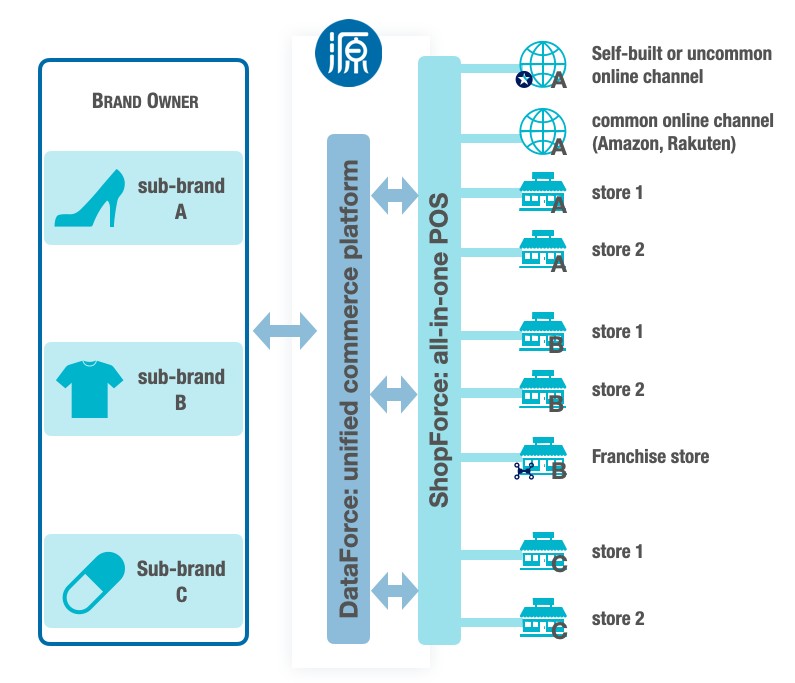
-
Multiple E-Com Channels
supported
- DataForce not only supports common e-commerce channels like Amazon and Rakuten but also allows integration with existing self-built e-commerce platforms or another online platform, thus achieving connectivity across all kinds of online and offline channels and providing users with a variety of touchpoints.
-
Multiple Operating Models
supported
- DataForce supports data interoperability across different operational models such as directly-operated stores, franchise stores, and distributors, achieving perfect support for various types of retail operating models.
-
Multiple Business Formats
supported
- DataForce supports the integration of all orders, memberships, products, and revenue data across different business formats, achieving unified operations for different sub-brands under a group.
Rapid iteration capability
Provide the capability to iterate or integrate new service to existing system efficiently and stably
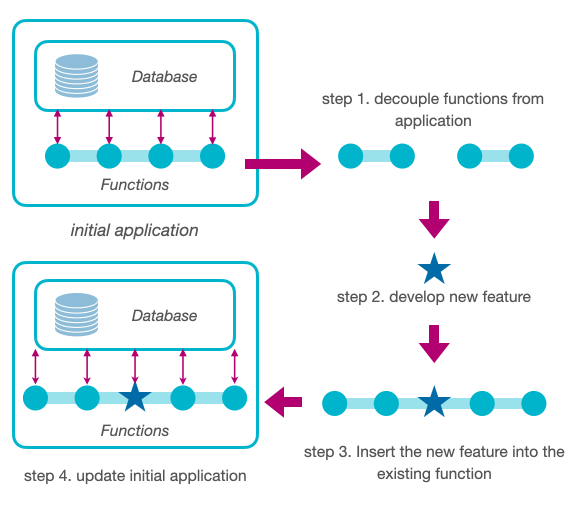
- High Cost
- Understanding the existing system is required to identify the boundaries with the newly inserted part;
- Modifications to the existing system during the iteration process can lead to additional workload
- Difficult to ensure Stability
- Modifying a system in operation can bring unpredictable issues;
- If there are problems with the new iteration, it is difficult to isolate it from the existing system.
- limited scalability capabilities
- Updates and iterations must be done using the same programming language and with the understanding of the original system‘s context.
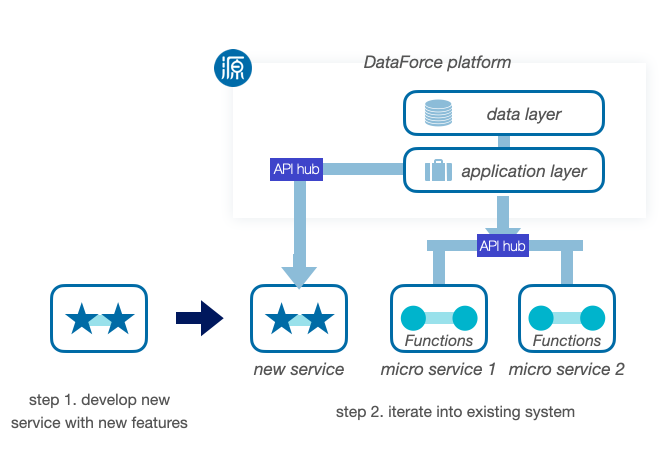
-
30-50%
dev cost saved
- By reducing the process of decoupling and re-coupling with existing systems, updates can be completed without the need to understand the context of the current system, significantly reducing development time and labor consumption.
-
10-20%
system stability issues reduced
- Integrate dependent service, which avoids impact on systems that are already in operation;
- Services are relatively independent, allowing for isolation when one service encounters an issue, thus preventing other systems from being affected.
-
Boundless
iteration with no limited
- Cross-language: New services can use any programming language, avoiding limitations caused by language
- Cross-team: Even teams not familiar with the original system structure can integrate new services with the existing system through the API hub provided by DataForce.

